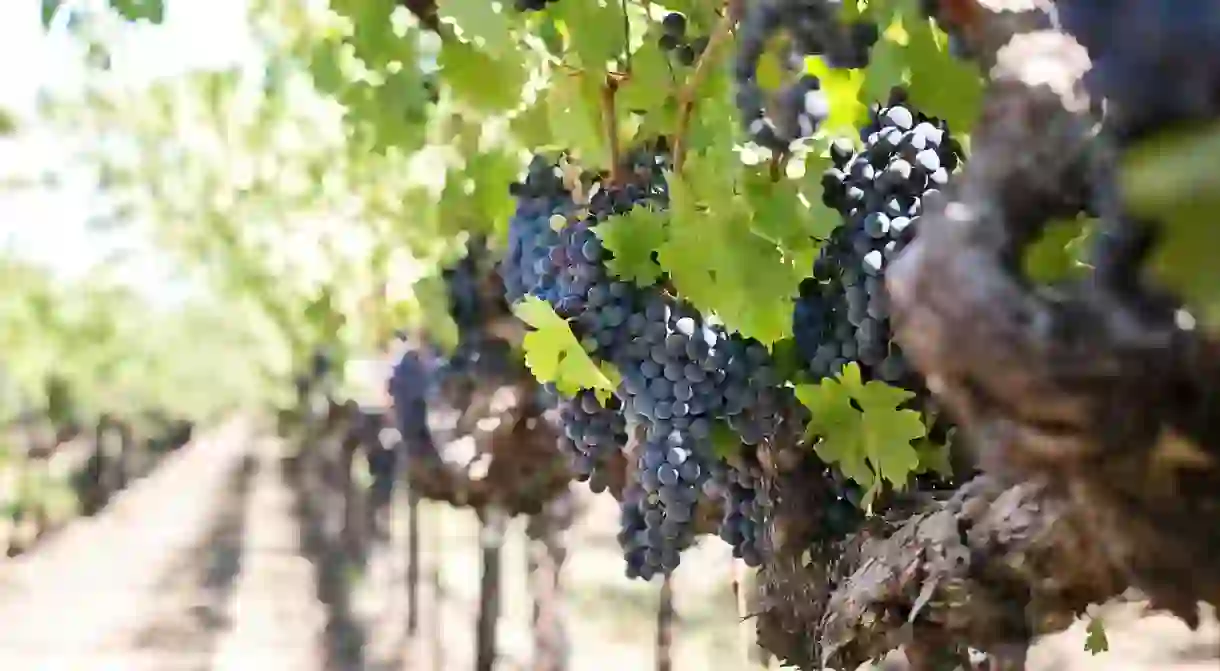The World's Lesser Known Wine Regions You Need to Know

Wine lovers, we’ve got some bad news for you; this year’s harvest could be a record low, which means there’s going to be less wine available, and it’s going to cost more. Frost, hail and drought have hit Europe and damaged grapes across France, Spain and Italy, causing European production estimates to drop about 14%. On top of that, recent wildfires in California have plagued many wineries. Although there are plenty of New World wines on the shelves, there are a whole host of other lesser-known wine regions bottling some great varieties, so you can easily avoid going dry this year.
Kakheti, Georgia
Though it’s one of the oldest winemaking regions in the world, dating back to 6,000 BC, many don’t associate Georgia with wine. The mild climate is ideal for grape growing, and the country boasts more than 500 species of grapes. The indigenous wines tend to be slightly sweeter, and clay jars called qvevri, rather than barrels, are used to ferment the grapes. Kakheti is the nation’s most prominent wine region, and the picturesque hilltop town of Sighnaghi is home to Pheasant’s Tears winery, which makes natural wines in the traditional way.

Virginia, USA
As one of the oldest states, Virginia has a long history of wine production, stretching back more than four centuries. It’s taken some time and effort to get there (Thomas Jefferson tried and failed to grow European grapes at Monticello, and when progress was made in the 1800s, Prohibition brought it to a standstill in the 1920s and 30s) it’s now the fifth largest wine region in America. The petit verdot, one of the native grapes, has been turned into an award-winning wine by King Family Vineyards. Merlot also grows well in what can sometimes be an unsteady climate.

Baja California, Mexico
When you think of alcohol and Mexico, you probably think tequila or mezcal, but wine production in the country is on the up, especially in Baja California. In fact, the Ruta del Vino has more than 100 wineries. Valle de Guadalupe, with dry summers and cool winters, has become a perfect place to cultivate vines. Restaurants and B&Bs have also sprung up as the wineries have garnered more interest, and the area has been called the new Napa. Valle de Guadalupe is much more relaxed than Napa and is still about local people producing local wine.

Canada
The USA takes most of the spotlight when it comes to North American wine, but don’t disregard Canada. In the Okanagan Valley in British Columbia and in the Niagara Peninsula in Ontario, there are two wonderful wine regions. The further south you go in the Okanagan Valley, the drier it gets, so it’s great for red grapes. Nk’Mip Cellars, the first Aboriginal-owned winery on the continent, is bottling wonderful premium reds. Wineries close to the famous falls are known for ice wine (grapes are frozen on the vine and are then pressed whilst frozen), though many are also producing dry varieties.

Croatia
In addition to numerous indigenous grapes, international varieties grow well in Croatia, and the country produces a wide range of wine, though more whites than reds. The Dalmatian Coast has a diverse array of microclimates, so it supports many different grapes. Further north, Krk is home to zlahtina grapes, which are grown almost nowhere else and are used to create a light white wine that pairs extremely well with seafood.

Serra Gaúcha, Brazil
South America is home to many renowned wine regions, and Brazil is quickly joining the ranks. Serra Gaúcha, in the south, produces the lion’s share, thanks to the optimal climate, which is more akin to Europe than the sunny beaches of Rio. Vines in Brazil date back to the time of colonisation, but Italian immigration in the 19th century really helped step up activity. Though wine has largely been consumed rather than exported, local producers slowly got wise to the opportunities of the international market, and the industry became well-regulated and promoted. The volume may not match that of Chile or Argentina yet, but there is definite focus on quality.













